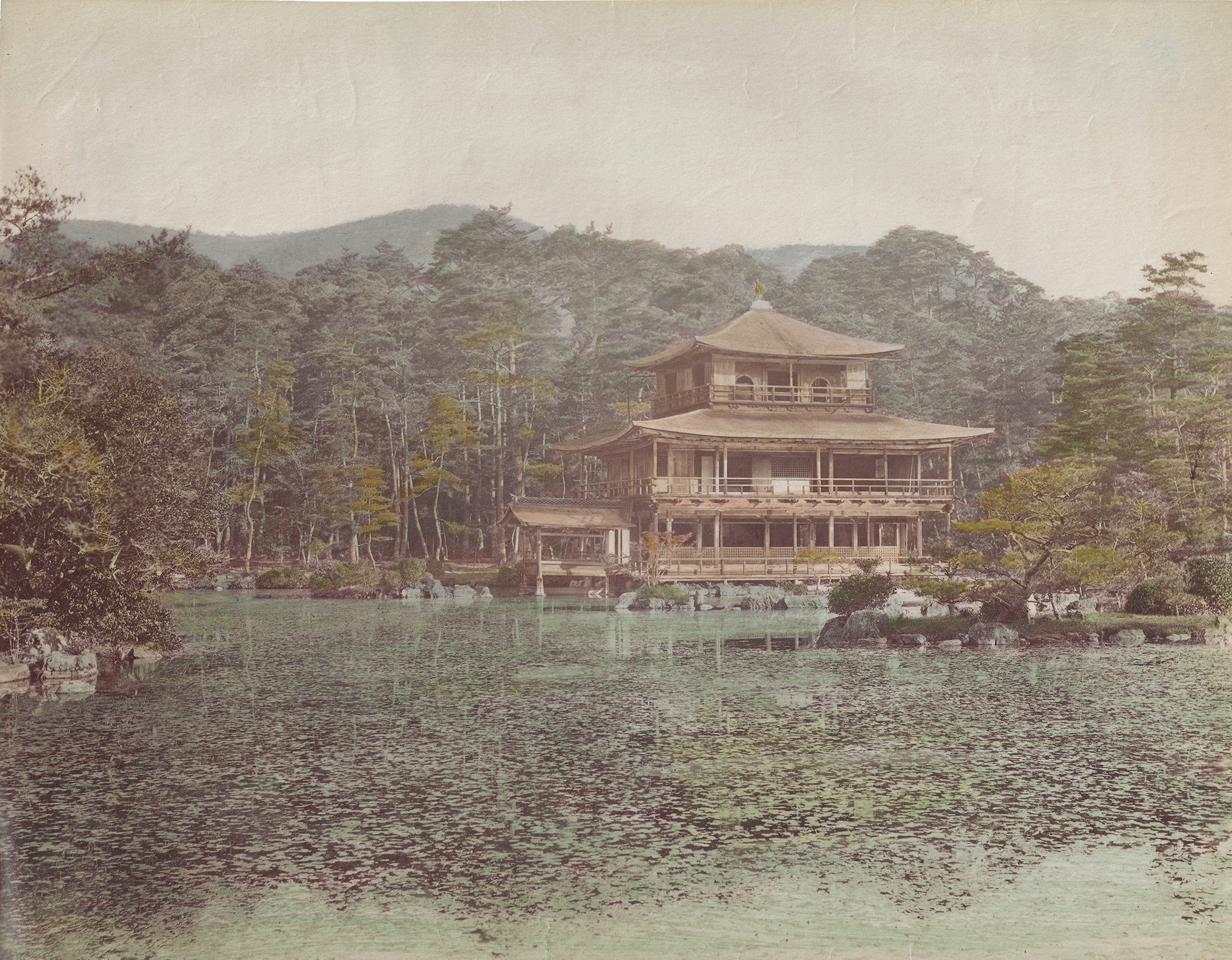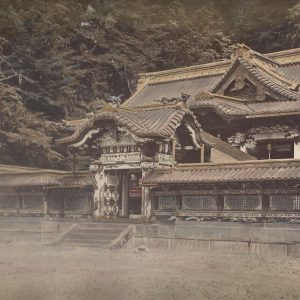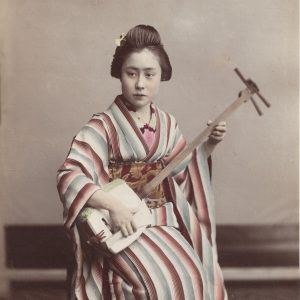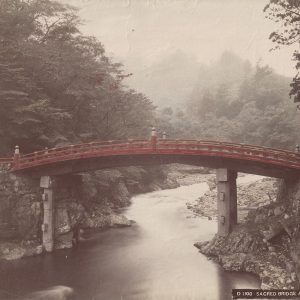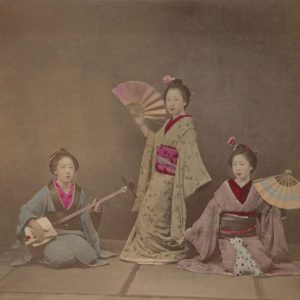Kinkaku-ji, Temple of the Golden Pavilion
200,00€
Hand coloured albumen print
(Non attributed)
Circa 1880
D. 20,5 × 27 cm
Description
This photograph on albumen paper is part of the refined production of the Yokohama school, whose subtle tones and soft colour palette ensured its success, especially with Westerners.
Although the use of colour, so typical of Japanese photography, was initially intended as a documentary tool, it is now widely used for its aesthetic appeal and contributes to the originality of Japanese production. These photographs are hand-coloured and reflect a specific know-how, and the colours are obtained from pigments mixed with bone glue (nikawa). This technique is particularly suited to the paper used for the print, whose main component is albumen. This warm-toned paper is particularly suited to the technique used for colouring, whose translucent aspect reinforces the naturalism of the representation.
The photographs of the Yokohama School were often taken by studios of photographers, first foreign, then local, who accumulated picturesque views of the country, its landscapes and traditions, for the benefit of foreigners. Indeed, the Westerners’ taste for exoticism conditions the subjects selected by the photographers. Here, it is the Golden Pavilion temple, Kinkaku-ji, which is represented in the background, behind a body of water and set in a green setting.
This temple, whose construction began in the 14th century, bears witness to the Japanese architectural tradition but also to the religious considerations that condition it. Indeed, the architecture and the natural setting of the building are linked to the Zen Buddhist doctrine of meditation. The interest in Zen Buddhism in the Muromachi period, during which this temple was built, was driven by the shoguns, who were re-engaging with China after a period of isolationism. Thus, this temple bears witness to the Chinese influence as well as to a religious revival that shaped the history of Japan. An emblematic place, the Kinkaku-ji is a building appreciated for its architecture in phase with nature, especially by Europeans who love this kind of souvenir photo, thus ensuring the prosperity of Japanese studios.
Condition report:
This photograph is in very good condition. A small fold is visible on the lower left corner.

